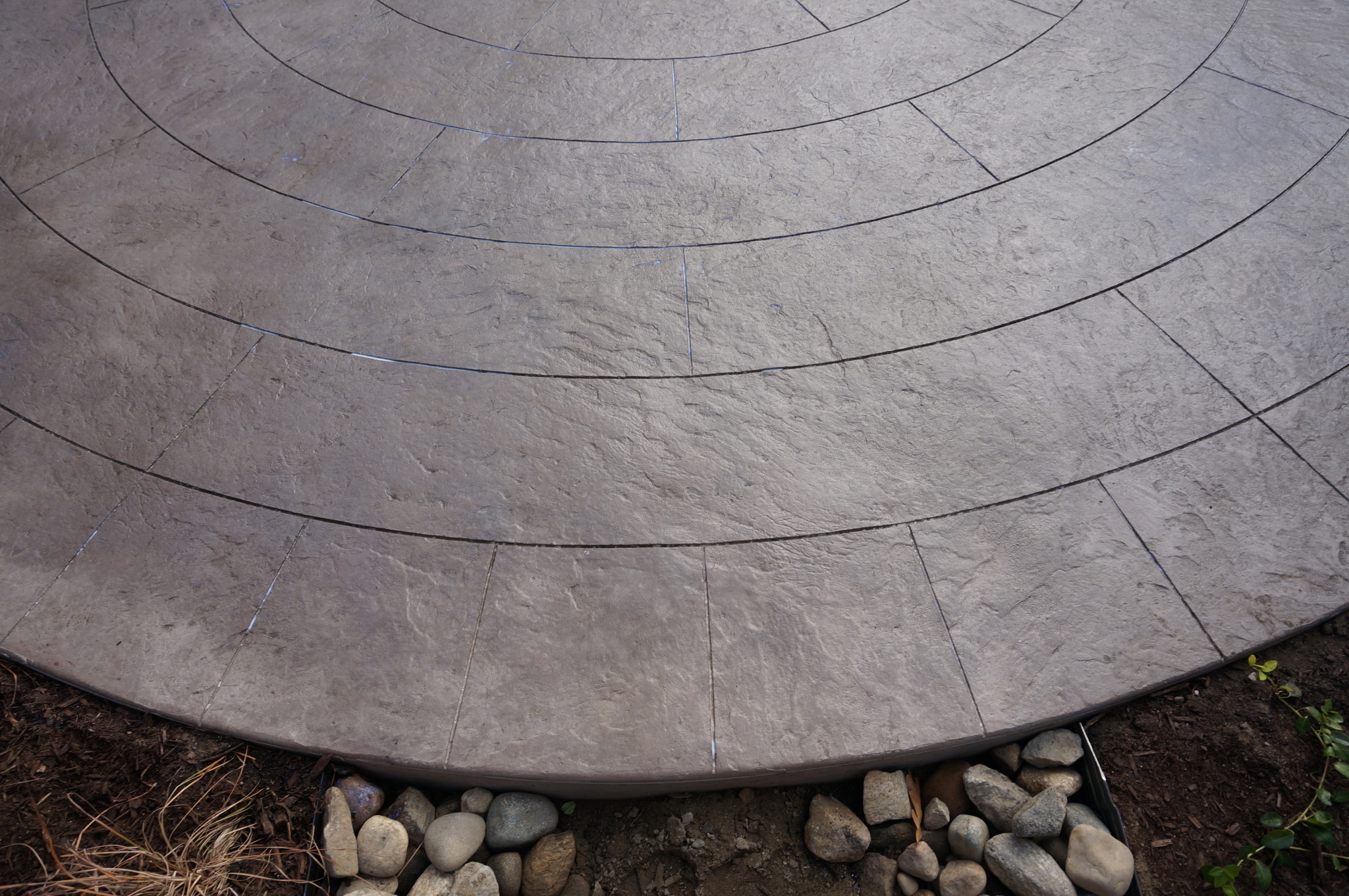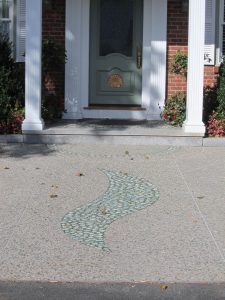 The water-cement ratio is a critical factor in determining the strength, durability, and finish quality of concrete. Understanding how to calculate and control this ratio can make the difference between a long-lasting surface and one prone to cracks, wear, or poor aesthetics. Hiring a concrete professional, like those at Triad Associates, is always the best option to ensure a durable surface and long-lasting results. While you may read about the proper water-cement ratio, getting it just right can be tricky, and there’s no replacement for experience and proper training.
The water-cement ratio is a critical factor in determining the strength, durability, and finish quality of concrete. Understanding how to calculate and control this ratio can make the difference between a long-lasting surface and one prone to cracks, wear, or poor aesthetics. Hiring a concrete professional, like those at Triad Associates, is always the best option to ensure a durable surface and long-lasting results. While you may read about the proper water-cement ratio, getting it just right can be tricky, and there’s no replacement for experience and proper training.
Why Is the Water-Cement Ratio Important?
The water-cement ratio is the proportion of water to cement by weight in a concrete mix. This ratio directly affects the workability, strength, and setting time of the concrete. A lower ratio leads to stronger, more durable concrete, while a higher ratio may offer easier workability but can compromise structural integrity and surface finish. Getting this balance right is especially crucial in hardscaping applications where visual appeal and long-term performance go hand-in-hand.
Calculating the Water-Cement Ratio
To calculate the water-cement ratio, you divide the weight of water in the mix by the weight of cement. For example, if your mix contains 200 pounds of water and 400 pounds of cement, the water-cement ratio is 0.50 (200 ÷ 400). A typical water-cement ratio for durable concrete ranges between 0.40 and 0.60, depending on the specific application. Lower ratios are used for higher-strength concrete, while slightly higher ratios may be acceptable for non-structural elements.
Tools for Accurate Measurements
To ensure accurate water-cement ratio calculations, use digital scales to measure cement and water by weight, not volume, as water content can vary with temperature and measurement method. For larger projects, volumetric mixers and batching equipment can help maintain consistent ratios. It’s important to account for water already present in aggregates, which can throw off your calculations if not properly adjusted.
Importance in Hardscaping Projects
A properly calculated water-cement ratio is vital for outdoor concrete installations like patios, walkways, and retaining walls, which are exposed to the elements, foot traffic, and potential freeze-thaw cycles. Here’s why the proper ratio is important in hardscaping projects:
Durability and Longevity
 Too much water can weaken the concrete matrix, making it prone to cracking, scaling, and early deterioration. A precise ratio contributes to a denser, less porous mix that resists water infiltration, freeze damage, and wear over time.
Too much water can weaken the concrete matrix, making it prone to cracking, scaling, and early deterioration. A precise ratio contributes to a denser, less porous mix that resists water infiltration, freeze damage, and wear over time.
Aesthetic Implications
In hardscaping, appearance matters. Excess water can lead to surface defects like dusting, uneven color, or laitance, which is a chalky film that forms when water rises to the surface. Getting the ratio right helps achieve a smooth, consistent finish that enhances the visual appeal of your project.
Common Mistakes and How to Avoid Them
Do-it-yourselfers can fall into common pitfalls when it comes to the water-cement ratio. Avoiding these issues is key to ensuring quality results:
Over-Watering Issues
One of the most frequent mistakes is adding too much water for the sake of workability. While a wetter mix may be easier to spread and level, it compromises the concrete’s strength and finish. Always measure carefully and resist the temptation to “eyeball” it.
Insufficient Mixing Techniques
Even with the correct ratio, poor mixing can lead to uneven distribution of water and cement, creating weak spots in the final product. Always mix thoroughly—whether by hand or machine—until the mix is uniform in texture and consistency. Pay extra attention in hot weather, when water can evaporate more quickly and affect mix balance.
Testing the Water-Cement Ratio
Ensuring the correct water-cement ratio doesn’t stop at the mixing stage—testing is a critical step to verify the quality and consistency of your concrete. Accurate testing helps identify potential issues early so adjustments can be made before the concrete sets, reducing the risk of structural weaknesses or surface imperfections.
The Slump Test
One of the most commonly used field tests, the slump test measures the workability and consistency of freshly mixed concrete. It involves filling a metal cone (called a slump cone) with concrete in three layers, each compacted with a rod. Once the cone is removed, the vertical “slump” or subsidence of the concrete is measured.
- High slump (greater than 6 inches) may indicate excess water and potential weakness.
- Low slump (less than 2 inches) may suggest a stiff mix, which can be harder to place or finish.
While the slump test doesn’t directly measure the water-cement ratio, it provides a reliable indicator of whether the mix falls within the desired workability range and is especially helpful for on-site adjustments.
Other Testing Methods
For more precise analysis, especially in large-scale or structural projects, additional tests can be conducted, including:
- Concrete Moisture Meters: These devices can provide quick readings of water content in the mix.
- Compressive Strength Tests: Concrete cylinders are cured and then crushed in a lab to measure the strength of the mix. A direct correlation often exists between water-cement ratio and compressive strength.
- Laboratory Mix Design: In controlled environments, exact water-cement ratios can be measured and tested to fine-tune mixes for specific applications.
These methods help ensure the concrete meets project specifications and performance expectations before and after placement.
Practical Tips for Optimizing Water-Cement Ratio
A balanced water-cement ratio starts with a good plan and attention to detail during preparation, mixing, and placement. Here’s how to stay on track:
Adjusting for Weather Conditions
Weather plays a significant role in how your concrete behaves. On hot, dry days, water evaporates quickly, which may tempt you to add more during mixing. Instead, consider using a retarding admixture or wetting the subgrade beforehand. In cold conditions, minimize water usage to prevent freezing and ensure proper curing.
Selecting the Right Cement Mix
Not all concrete mixes are created equal. Choosing a mix designed for your specific project—whether it’s high-strength for a driveway or decorative for a patio—will help ensure that the ideal water-cement ratio is achieved. Pre-mixed bags often include guidance on the correct amount of water to add, and ready-mix deliveries can be adjusted by the supplier based on your requirements.
Work with Triad Associates’ Concrete Experts
At Triad Associates, we understand that a perfect concrete finish starts with the right mix. Our team of experienced professionals has the knowledge, tools, and training to calculate and control the water-cement ratio for optimal strength, appearance, and performance.
Whether you’re building a decorative patio, durable driveway, or a custom outdoor living space, we ensure precision at every step. Let Triad Associates bring your hardscaping vision to life with concrete that’s not only beautiful but built to last. Contact us today to discuss your project and schedule a consultation with our expert team.




